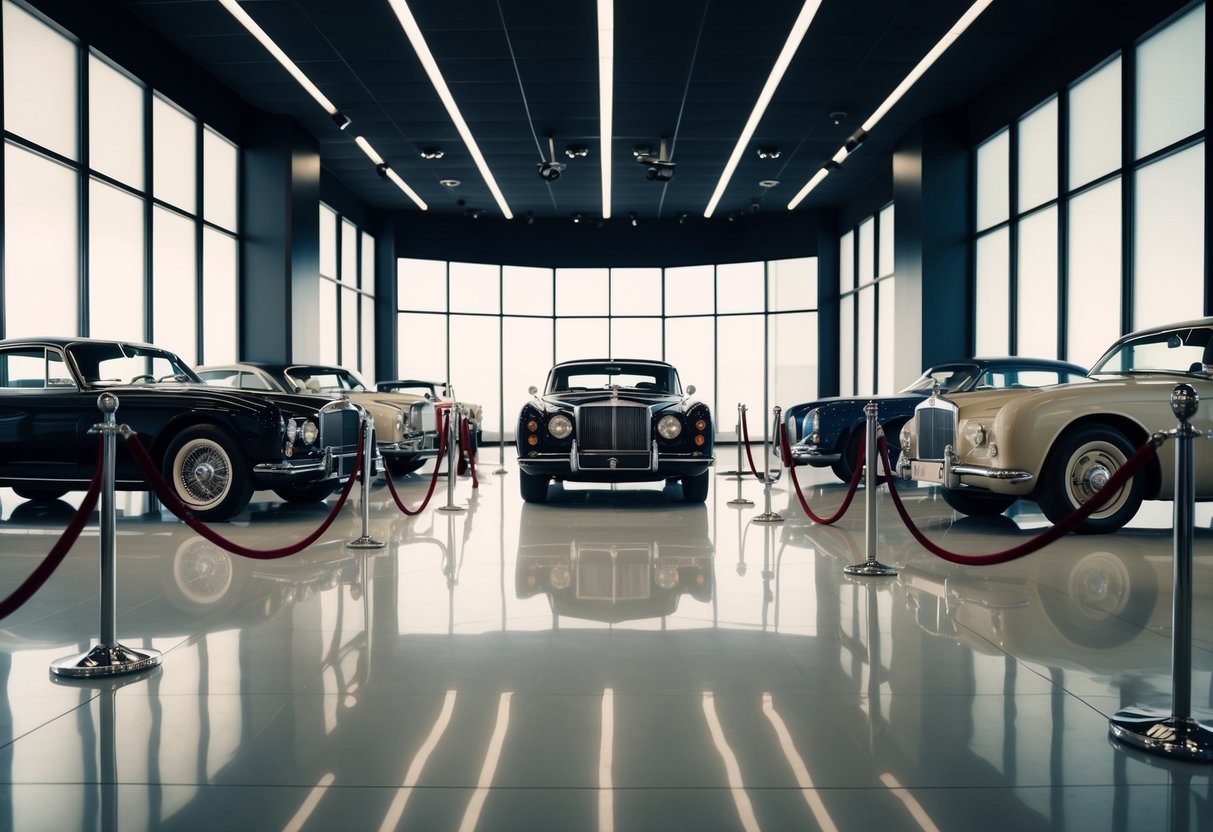
Maintaining Your Classic Collection
Maintaining a classic car collection requires attention to daily care, safeguarding its value, and focusing on both restoration and preservation. Regular upkeep is key to keeping these legends in pristine condition for years to come.
Everyday Care and Maintenance
Everyday maintenance ensures that classic luxury cars remain in premium condition. Regular cleaning and dusting of both interior and exterior surfaces prevent grime buildup. Use high-quality products specifically designed for vintage automobiles to avoid damage.
Check fluid levels frequently, including oil, brake, and coolant, to ensure peak performance. Inspect tires for wear and maintain correct pressure. Routine lubrication of moving parts minimizes wear and tear. Keep the battery charged and functioning by driving the car regularly, which also prevents engine parts from seizing.
Engaging reputable mechanics familiar with classic models is crucial for more extensive repairs or tune-ups. He or she should have experience with historical vehicles and understand their unique systems. Such professionals ensure the car runs smoothly without compromising authenticity.
Protecting Your Investment
Protecting the investment in classic cars often starts with secure storage solutions. A climate-controlled garage shields the vehicles from environmental damage, including humidity and temperature fluctuations. This reduces the risk of rust and preserves the paintwork.
Consider car covers that provide an additional layer of protection against dust and potential scratches. Comprehensive insurance tailored for classic cars offers financial protection and peace of mind. Make sure the policy covers restoration costs and rare parts replacement.
Keep detailed records of all maintenance and restoration work. This documentation supports the car’s value and provides proof of care for potential buyers. Preservation efforts ensure historical authenticity, making these cars not just modes of transport, but pieces of automotive history.
Appendix: Model-Specific Restoration Guides
This appendix provides detailed guidance on the restoration of specific classic luxury car models. Each model has unique features and challenges that make its restoration both rewarding and intricate for enthusiasts and collectors alike.
Chevrolet Bel Air
The Chevrolet Bel Air is a symbol of 1950s Americana, with its distinctive tail fins and chrome details. Restoring a Bel Air involves sourcing original parts, especially for the trim and interior. The task often includes refurbishing the V8 engine, which is revered for its durability and power. Attention to paint and upholstery is crucial to capture the car’s original charm. Many restorers prioritize maintaining the authenticity of the vehicle, ensuring that any modern replacements closely resemble the original parts. The iconic nature of the Bel Air makes finding resources and community support readily accessible.
Ford Thunderbird
The Ford Thunderbird is celebrated for its sleek design and engineering innovations. Restoration projects often focus on the vehicle’s luxurious interior and convertible top mechanism. Sourcing parts can be challenging due to its sophisticated original equipment. Restorers typically focus on preserving the Thunderbird’s elegant body lines, which requires finesse in metalwork and panel alignment. Engine restoration often includes attention to the Thunderbird’s specific performance features, ensuring it handles gracefully even after many decades. Many projects also emphasize restoring the unique electrical features of the vehicle, essential for the driving experience.
Lincoln Continental
The Lincoln Continental is known for its luxury and distinctive suicide doors. Restoration often centers on its complex design and advanced features for its time. Rust prevention is a priority due to the vehicle’s massive size and intricate bodywork. The restoration process includes careful attention to the luxurious interior, especially leather and wood components, which are crucial for retaining the car’s original opulence. Sourcing authentic parts is critical, especially the unique trim pieces that define the Continental’s elegance. Restorers place a high value on maintaining the car’s historical significance, keeping exterior lines smooth and authentic.
Acura NSX
The Acura NSX, a 1990s icon, combines Japanese engineering and performance with American market appeal. Restoration projects often deal with sophisticated electronics and advanced aerodynamics. Restorers need to focus on the aluminum bodywork, a major aspect that sets the NSX apart, requiring specialized skills to handle. Engine refurbishment often leans towards maintaining its original speed and performance metrics with precision. Upholding the vehicle’s innovative spirit, many restorers also focus on sustaining its advanced technological features. The NSX community provides robust support networks, aiding in sourcing parts and technical advice.



